CIS353 Top Bike Analysis Sample Assignment
Top Bike
CIS 353
Top Bike Analysis
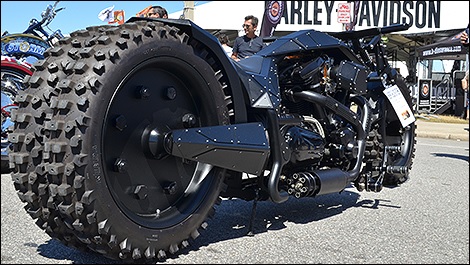
Application Requirement Specifications For Project on Top Bike Company
- Introduction:
This application project plan is for providing a systematic and organized approach to all entity associated parties of a business. In this “Top Bike” project I will focus on developing an brand new system which would simplify in order to stock, verifies stock and request for the new stock an repair part stock etc. for “Top Bike” company.
The brand new application will enable for the employee and customer functionality based stock asker, stock controller and bike staff. The designed application functionalities are based on the client and employee which has the ability to maintain the new top bike and repair part inventory. This project on inventory control management system will be completed within three month period. The stages for this project contain five steps of the development life cycle which are Analysis Phase, Planning Phase, Design Phase, and Implementation Phase, testing / maintenance Phase.
- Current Situation of the Company.
I. Introduction
“Topbike” is a bicycle shop and showroom with a large range, from children’s bikes to large mopeds and a wide range of accessories like child seats, helmets, clothes and tools. They sell these goods ‘off the shelf’ to customers and also make up custom built bikes to customers’ requirements. They also make telephone sales, including parts, both to customers and to smaller shops and carry out repairs for customers. The following is a brief description of how this is done.
II. Purchasing/stock control
When customers purchase items from the shop, a record is kept in the sales book of the item sold and a receipt is issued to the customer. At the end of the day the manager deducts the items sold from records of stock held on card indexes. It is a source of great frustration to Herbert that the stock cards are not always accurate. He also doesn’t know whether staff members are busy or just tired and forget to record sales or whether they are stealing stock. If the stock level for a particular item is very low then the manager will pass this to Jean to re-order this item of stock from a supplier. When the new stock comes in the stock cards are updated, and the list of back orders (see below) is checked.
III. Repairs
When customers bring in an item for repair, they are quoted a price which is calculated by Herbert or Vijay, who is the chief repairman, by adding parts + labor + VAT. This quote is recorded in the repairs book, and customers are expected to make payment when they collect the item. Sometimes it is necessary to adjust the quote when a repair job has discovered hidden problems! The repair will involve the use of new parts that also involves altering the stock lists/ re-ordering. The procedure for custom-built bikes is very similar and a record is kept in the custom-built bikes list.
IV. Telephone orders
Customers (known as Indirect Customers) may make an enquiry by phone, in which case the staff member will consult both the price list (also a manual list) and the stock list. If the price is right and the item is in stock (assuming that the stock list is correct), the customer may place an order. The order is recorded in the telephone orders book. In the morning a designated member of staff (usually Vijay) puts together the appropriate items of stock, if they are available, together with an invoice that is collected and delivered by the company van. If items are in fact unavailable Vijay has to tell Herbert to make re-orders, send a part order, record the part order not completed and phone the customer to apologize. The telephone customer would typically then pay by check. Herbert and Jean (who works in the office) handle the banking. If all or part of an order is out of stock (or is not normally held in stock) then a re-order is sent to the suppliers (if one hasn’t already been sent). The order is then filed away in a back orders file that is checked when new stock comes in.
A record is kept of customers’ invoices that is checked monthly. If a customer has failed to pay during the month then a repeat invoice is sent to them. If Jean is too busy/ forgets/ is on holiday/ sick then repeat invoices are delayed. Currently the business is owed approximately £10,000 by other shops and £10,000 by indirect customers. Herbert blames Jean’s inefficiency for these debts and for his stomach ulcers!
V. Trade customers
Other bike shops may also place orders by phone. The only difference in the way their orders is handled to those of other (indirect) customers is that bike shops get a 15% discount on all purchases. Herbert suspects that there are some customers getting this discount who shouldn’t be. Staff at TopBike is also entitled to this discount. Unbeknownst to Herbert, Ged has already bought 4 bikes this year!
Suppliers’ invoices
Herbert and Jean also handle all suppliers’ invoices which, when received, are checked against orders. Where there is a discrepancy usually Jean will phone the suppliers; otherwise “TopBike” has a reputation for paying promptly.
Functional Requirements
I. Purchase an Product;
1.1 In store order can be made using the application.
1.2 Telephone order can be made using the application.
1.3 Online order can be made using the application.
1.4 The application has the ability to store and altered/change client information.
II. Maintain Inventory Control;
2.1 Current inventory can be checked using the application by an employee.
2.2 When supply is low the application will send automatically to the supplier to re-order.
2.4 Inventory and Parts for Repair Files can be altered/change using the application.
III. Prepare and Maintain Repairable Product;
3.1 Documentation/quote can be made on repair on the application by an employee.
3.2 To maintain the inventory the application can send automatically parts list when stock is low.
3.3 The application will be able to authenticate and alter/change Parts for Repair File.
3.4 Clients will be automatically getting repair quote by the application.
IV. Maintain Bills;
4.1 Bills can be created for clients and suppliers using the application.
4.2 Receipt can be automatically created for a client using the application.
4.3 Bill File can be altered or change using the application.
2. Non-functional Requirements
4.1Operational
- Any system can be use for the new application.
- The application can be run on multi platform without any issue.
4.2 Performance
- All employees can be supported simultaneously on the new application.
- The application should be available all year and every week and every day 24 hour.
4.3 Security
- Application will require a log in information from all the employee who uses.
- Only background pass employee will have access personal data of the client.
- The application includes safeguards from worms, viruses, Trojan Horses, spyware.
4.4 Cultural and Political
- There are no particular cultural and political requirements
- Application Process and Logic Models:
Use Case:
After listing the functional and non-functional requirements, We can determine that for TopBike new application we need to use case scenario and use case diagram.
The major actors, who works on in this application;
1 Client
2. Employee/s
3. Supplier
The difference between a client and employee is someone who uses the application for buying a product or sending in a bike for repair is client and someone who will utilize the application and input relevant information required is an employee. The company who sends repair part to “Top Bike” are considered as supplier.
The main use cases for the application are
- Purchase Product.
- Maintain Inventory Control.
- Repair Part Quote.
- Maintain Bills.
It is a very simple relationship between clients and use cases. Clients has the opportunity to view and order the buying products. Also, client can view the repairing parts quote use case. Communication of all use cases only employee would be allowed. Communication of the supplier with the maintain Inventory Control and Maintain bill use case.
Use Case Scenario:
Each use case has been detailed and scenario detail explain the triggers for each use case, major inputs and outputs, steps performed, and post-conditions .
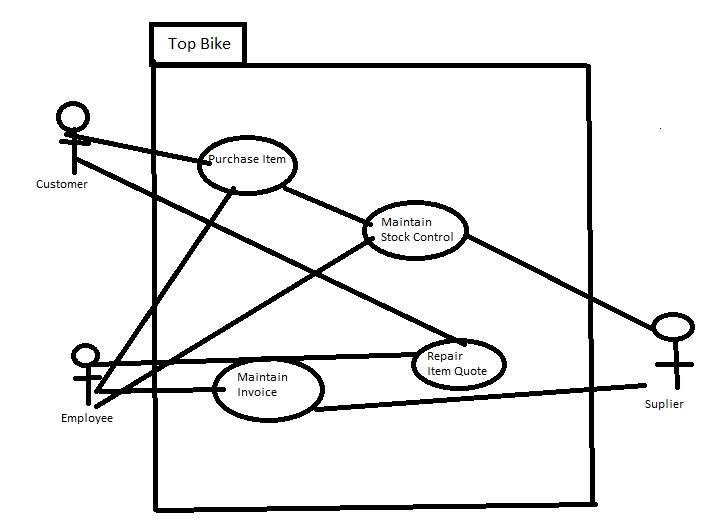
Use Case figure
Scenario:
Use Case Name: Purchase Product ID Number: 01
In Brief: This gives the opportunity to client to place order through various ways such as the internet, phone, or store of Top bike..
Trigger: Client
Type: External / Temporal
Preconditions:
- A product is ready to purchase by an client.
- If a Client wants to buy in store “Top Bike” must be open.
- In order to order by the phone a line must be free to communicate client and employee
|
Major Inputs: |
Major Outputs: | ||
|
Detail |
Source |
Description |
Destination |
|
Number of Purchase |
Client |
Order detail |
Employee |
|
Orders |
Order Product |
Client | |
|
Client detail |
Client Data File |
Major Steps Performed
- Purchase request is made by client
- Information can be added to the client file if the client is new.
- Order has been receive by client
Information for Steps
- Order form of purchase
- Client info from client/ client file
- Order Product
Post-conditions:
Order is received by client. Client and inventory status has been changed.
|
Use Case Name: Repair Product Quote |
ID Number: 02 |
Short Description: With the details provided by client to produce a quote
Trigger: Client
Type: External / Temporal
Preconditions:
- Client brings a bike to get repair/ or has one
|
Major Inputs: |
Major Outputs: | ||
|
Description |
Source |
Description |
Destination |
|
Client orders |
Client |
Repair Quote |
Client |
|
repair |
Reorder Parts |
Maintain Inventory | |
|
Quote detail |
Employee |
Control | |
|
Quantity of Altered Part |
Repair File |
Major Steps Performed
- Client must contact “Top bike” about broken products or bike.
- Employee generate a quote information
- Employee check to see if the required parts are available.
3a. If parts available quotes created by employee,
3b. otherwise, employee enters order specification so a new re-order request is carried out
- Repair quote is given to client
Information for Steps
Client
Client
Repair File
Maintain Inventory Control
Repair Quote
Post-conditions:
Employee creates a repair quote and delivered to client
Use Case Name: Maintain Bills ID Number: 003
Brief: Generate and send bills using bill data from supplier, employee and repair product quote.
Trigger: Client
Type: External / Temporal
Preconditions:
- A client purchased an product
|
Major Inputs: |
Major Outputs: | ||
|
Description |
Source |
Description |
Destination |
|
Bill Data |
Employee |
Receipt |
Client |
|
Repair Quote |
Repair Product Quote |
New Bill Data |
Bill File |
|
Information | |||
|
Supplier Bill Data |
Supplier |
|
Major Steps Performed |
Information for Steps | |
|
1. |
Employee creates a bill by typing it into the application. |
Employee |
|
. | ||
|
Bill, Bill File | ||
|
2. |
With new information bile file can be change | |
|
3. |
Customer receives a receipt which is generated |
Bill Data |
Post-conditions:
Client received a receipt. Bill file and supplier file can be changed /altered
11
Use Case Name: Maintain Inventory Control ID Number: 0004
Short Description: parts and products is checked in order to maintain the inventory
Trigger: Client
Type: External / Temporal
Preconditions:
- Application must be on.
- inventory file is updated after client purchase a product.
- Inventory order must be check by employee.
|
Major Inputs: |
Major Outputs: | ||
|
Description |
Source |
Description |
Destination |
|
Order Specs |
Employee |
Re-order Request |
Supplier |
|
Incoming Inventory |
Supplier |
Inventory Status |
Employee |
|
Altered Inventory |
Inventory and Parts | ||
|
for Repair files |
Major Steps Performed
1. In order to check for parts employee must ask for it
2. The status of inventory is given to employee
- A reorder will automatically generate if the inventory is low.
- New inventory will be logged and put in the files
Information for Steps Product ID
Product is IN or OUT of inventory (available/unavailable)
New Inventory info
Post-conditions:
New parts are logged into the system and recorded and inventory file altered.
- Context Diagram
Three actors shown interact with the application on high-level.
The client sends
1. Order Purchase
2. Application receives a order repair
3. Order is received
4. Repair and bill quotes.
The employee
- Order receives
- Information about repair
- sends repair quote and order,
- Bill information.
The supplier sends
- New inventory sent to the application
- re-order request is recieved.
Use Case Scenario:
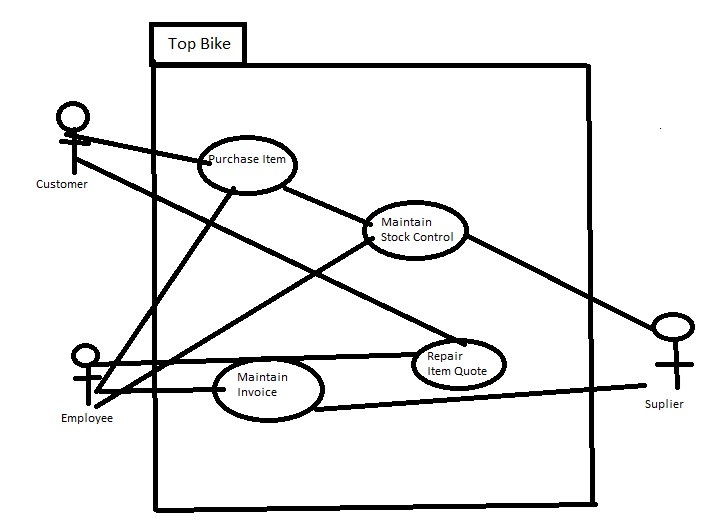
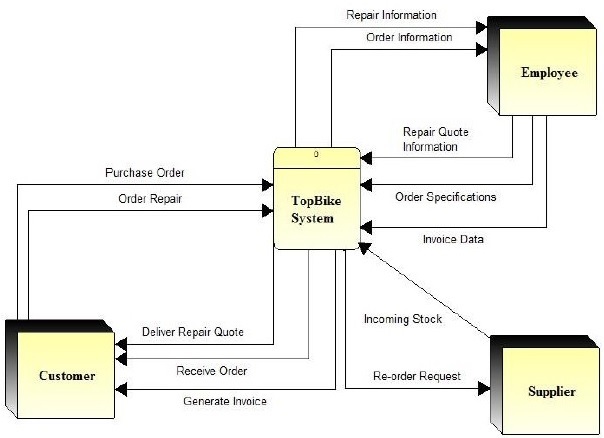
Figure 1
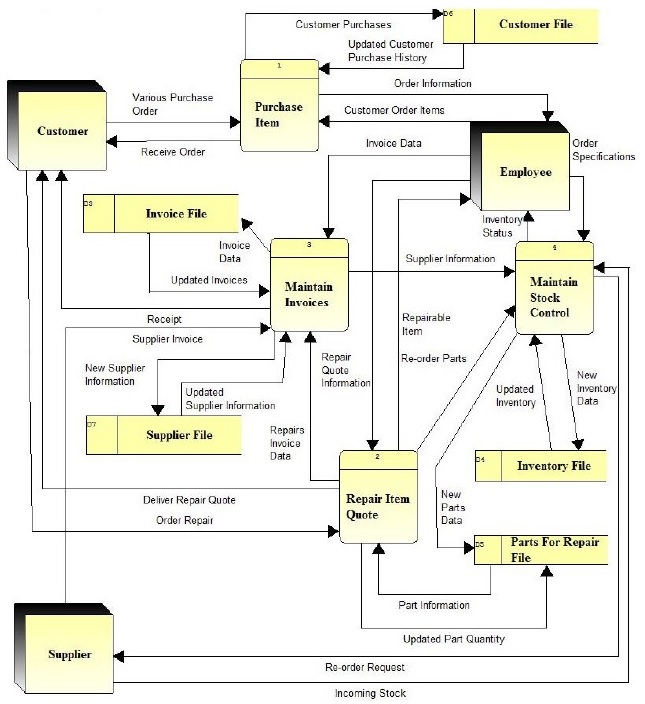
Figure 2
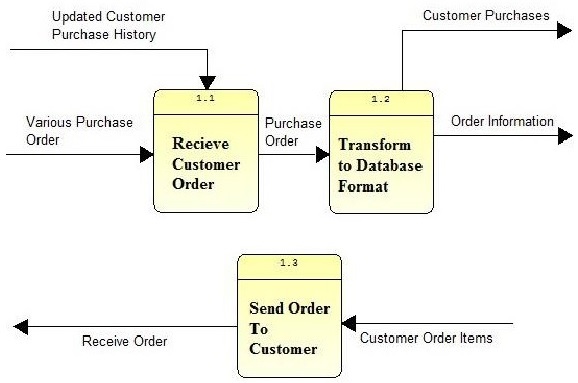
Figure 3
6. Project Plan Team Structure
|
Name |
Duty |
|
Smith |
Project Manager / Technical Head |
|
Jhoni |
Programmer / Design Architect |
|
Randi |
System Analyst / Quality Analyst |
|
Hana |
Risk Manager / Database Administrator |
7. Project Schedule or Break down Structure
|
Task |
Due Date |
Responsible Member |
|
Software Project Management Plan |
24/03/2018 |
ALL |
|
Software Requirements Specifications |
2/04/2018 |
ALL |
|
Software Architecture Design Document |
6/04/2018 |
ALL |
|
Work Breakdown Structure |
23/04/2018 |
ALL |
|
Milestone Report |
17/05/2018 |
ALL |
|
Risk Management Plan |
04/06/2018 |
ALL |
|
Quality Assurance Plan |
14/06/2018 |
ALL |
|
Source and Object Code |
24/06/2018 |
ALL |
|
User Manual |
15/07/2018 |
ALL |
|
Work Package/ Action Performed |
Responsible Member |
Time Duration ( Hours) |
|
Software Project Management Plan |
ALL |
60 |
|
Software Requirements Specifications |
ALL |
80 |
|
Software Architecture Design Document |
ALL |
90 |
|
Work Breakdown Structure |
ALL |
70 |
|
Milestone Report |
ALL |
80 |
|
Risk Management Plan |
ALL |
80 |
|
Quality Plan |
ALL |
85 |
|
Source and Object Code |
ALL |
155 |
|
Total |
700 |
9. Team Details and Project Manager
|
Role |
Position |
|
Stake Holder |
Sponsor |
|
Manager |
Consultant |
|
Project Manager |
Technical Head /Project Manager |
|
Team Member 1 |
Design Architect/ Programmer |
|
Team Member 2 |
Quality Analyst /System Analyst |
|
Team Member 3 |
Risk Manager/ Database Administrator |
10. Conclusion
In this paper, we have proposed the new application system for the company “Top Bike” due to company is working as paper based which is difficult to maintain the file. As we implement this software to the company their productivity will rise as the system we introduce is computerized and easy to maintain inventory and files. In this system there is the function of for product list, supplier list, repair product list, invoice list easily available. With the help of proposed functionality is easy. Eventually all these positive things lead the success of Top bike Company.


